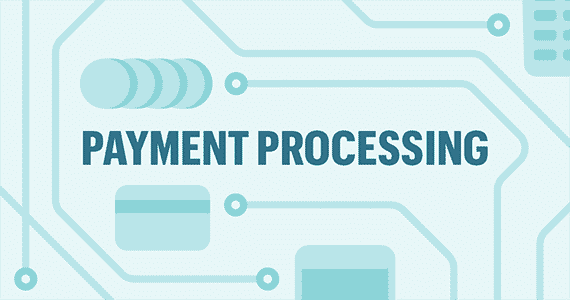As is the case with a lot of things related to technology, electronic payments seem much simpler than they are. The person paying either scans or enters his or her credit card number and – Voilà! – the money appears in the seller’s business account not long thereafter.
It’s just that simple, right?
Wrong.
There are a lot of steps involved with electronic payment processing, and each one needs to be built and managed properly in order to maintain the flow of revenue. If you’re someone who handles back office solutions, you’re likely spending time working on your payment processing situation. If you’re new to this or you’re experiencing problems, then you probably already realize that this can be quite complicated.
Therefore, Curious Check would like to provide you with a straightforward explanation and an answer to the question, “How does payment processing work?” We’ll take you through a step-by-step transaction so that you can get a feel for what actually happens from the time the customer agrees to buy to the moment the funds are available to your business. We are doing this because that’s what we do – Curious Check helps our partners fins the right payment processing systems for them so that their transactions can be handled quickly, safely and painlessly.
If you need to find great payment processors for your online business or brick and mortar, read our blog on our top credit card alternatives to Paypal & Stripe (all with lower rates).
The Credit Card Processors Work (5 Steps)
1. The Credit Card Payment
The first step, of course, is the payment itself. Your customer presents a credit card, either online or in-person, and you accept that payment.
While different payment processing systems work in different ways in terms of their particularities, the first step that any system is going to take is to record that payment information, meaning the credit card number, expiration date and verification number at the very least. That information is not stored for long in that form, as it needs to be sent in a way that minimizes the chance that it can be stolen.
2. The Encryption
Encryption is the most important aspect when answering the question of how payment processing works. That’s because every second of every day, people and computers are out there trying to steal information, payment information in particular.
According to information on the Council of Insurance Agents and Brokers’ Web site, one National Security Agency data center located in Utah was experiencing 300 million hacking attempts every day. Small and medium businesses do not face that level of scrutiny, but hackers are out there watching. The payment data needs to be encrypted and authenticated by the payment processor in order to minimize fraud and theft. This happens immediately after the information is taken.
3. The Payment Authorization
In addition to protecting from fraud and theft, payment processors need to be able to immediately tell the seller if that credit card is valid and therefore can be used in this transaction.
There are many reasons that a credit card may not be authorized, including suspension of the account for nonpayment, suspicion of fraud, the card is over its limit and any other situations that could arise. The payment processor needs to answer this question within seconds so that the seller can prevent a faulty sale.
4. The Transfer
The penultimate step that a payment processing system takes is to transfer the funds to the seller’s receiving account after the information has been encrypted and the transaction has been authorized.
Once again, this is a transaction that needs to be encrypted while those funds are “traveling through cyberspace” so that hackers cannot reroute that payment to a different account, thereby causing the seller to never see them. The initial transfer of funds to the seller’s account usually takes seconds, but it can take a bit of time for those funds to actually hit that bank account’s ledger.
5. The Arrival
Finally, after all of the steps above are taken, the funds arrive in the seller’s bank account and are available for use.
Different payment processing systems and different banks have different time periods that exist between payment and the ability to access funds. Some are nearly immediate, but others can take a few days depending on a whole host of factors. Regardless, at this point, the transaction is truly complete.
As you can see, the question of how payment processing works is one that’s quite involved. If you need this type of solution, you need one that’s scaled to meet your needs and protect your interests.

If you’d like to learn more about what can work for you without getting overwhelmed, click this link to take a short survey. Curious Check will be able to match you with payment processors that are a fit for your needs without the hassle and stress.
Top Payment Processors for Businesses (Less than 2.9% per Transaction)
- PayJunction – If making over $15k sales a month – Learn More
- PaymentCloud– For High Risk and small business. 98% Approval Rating – Learn More
- Shift Processing– New Zero Fee Processing – Learn More






















